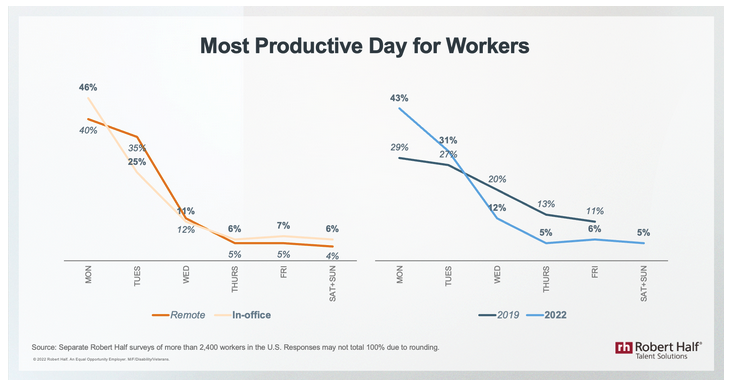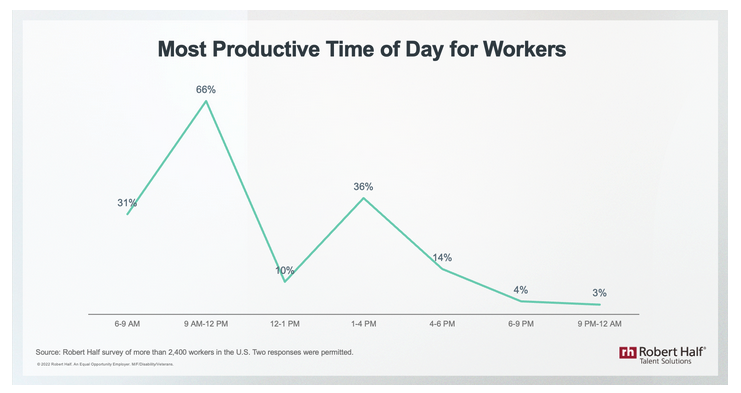Employers worried about losing their telecommuting employees will find reassurance in a recent Robert Half survey: remote work doesn’t seem to undermine productivity or throw staff schedules off track. Except that it does introduce some “distortions” worth noting. Here are some explanations.
Last May, Robert Half surveyed 2,400 U.S. telecommuters to better understand their work habits. They revealed that their peak productivity was at the beginning of the week, on Mondays (43% of the time) and Tuesdays (31%), and then dropped drastically on Wednesdays (13%), Thursdays (5%) and Fridays (6%). Viewed from afar, these results are similar to those observed in 2019, a year before the pandemic.

However, a closer look at the graph shows that the telecommuter productivity curve implodes in the middle of the week. If it starts out like a lion, it goes completely off the rails by the end of the week. A bit like Slovenian cyclist Tadej Pogačar, who mismanaged his efforts during this summer’s Tour de France, following all the attacks of his opponents, to finally explode in the Col du Granon during the 11th stage.
Better effort management at the office?
On the flip side, the productivity curve for face-to-face workers was much more evenly distributed in 2019: workers back then started out slower, but kept their collective effort above 10% in the last three days of the week – in line with Tour winner Jonas Vingegaard, who was able to save himself until the fatal assault on the Granon, and then manage his efforts in the subsequent stages.
Could it be that just being in the office provides extra motivation to “finish well” this week? The question arises.
The other observation from the Robert Half survey relates to the daily schedule adopted by teleworkers. In a single day, the productivity peaks of telecommuters in 2022 appear to be modeled on a conventional office worker’s work schedule.
Survey participants reported being productive from 9:00 a.m. to 12:00 p.m. in the morning, and from 1:00 p.m. to 5:00 p.m. in the afternoon. All in all, few people find the motivation to work when they wake up, at lunchtime or in the evening… After two years of pandemic diet, it may be that the fatigue of chaotic schedules has brought telecommuters back to familiar schedules, even at home.

Beware of interruptions!
Finally, the Robert Half survey tells us that telecommuting has not solved the problem of “meeting fatigue” in organizations. When asked what is holding back their productivity, the top answer was calls and meetings at 35%, which reminds us of the importance of beingware of the risks of “hyper-collaboration”, which we recently discussed in an article.
Understanding one’s work habits and preferences – and focusing on results – is key to maximizing productivity, Paul McDonald, senior managing director of Robert Half, reminded us in the release attached to the survey. When team members communicate their schedules and are aligned with goals, they become more effective.”
Employers are not asking for more!




